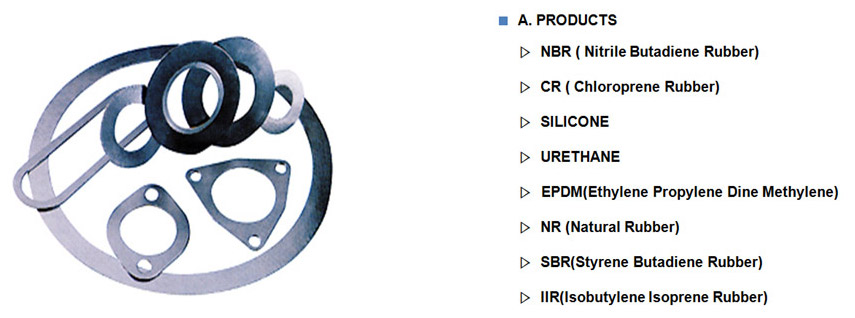Gasket
Description
As each gasket is essentially a mechanical seal designed to prevent leakage of liquid or air under varying degrees of compression, it is important that precise application specifications are provided with the request.pressure, chemical resistance, temperature tolerances (hot and cold).

Factors Affecting Gasket Performance
A gasket has one basic function: to create a positive seal between two relatively stationary parts.
The gasket must do a number of different jobs well to function properly: first, create an initial seal; second, maintain the seal over a desired length of time; third, be easily removed and replaced. Varying degrees of success are dependent on how well the gasket does the following:
- Seals system fluid.
- Chemically resists the system fluid to prevent serious impairment of its physical properties.
- Deforms enough to flow into the imperfections on the gasket seating surfaces to provide intimate contact between the gasket and the seating surfaces.
- Withstands system temperatures without serious impairment of its performance properties.
- Is resilient and resists creep enough to maintain an adequate portion of the applied load.
- Has sufficient strength to resist crushing under the applied load, and maintain its integrity when being handled and installed.
- Does not contaminate the system fluid.
- Does not promote corrosion of the gasket seating surfaces.
- Is easily and cleanly removable at the time of replacement.
During the gasket product selection process that follows, we recommend that these nine (9) factors be used as a checklist from the viewpoint of the user’s degree of need for each factor and the manufacturer’s degree of compliance.